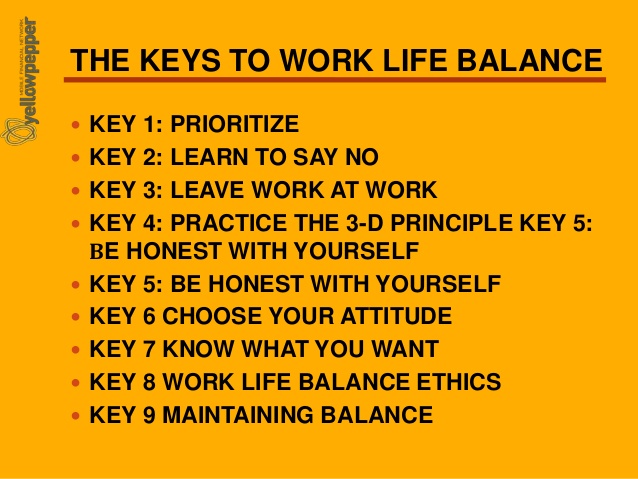
What is the principal thought or feeling that rings a bell when you hear the expression “work-life balance”? Is it a feeling of equalization and power over your very own life? Or on the other hand, does the idea abandon you feeling like one part of your life is overwhelming everything else? Is your work making you pass up exceptional minutes with friends and family and family? Or then again are your family obligations so overpowering that you discover you can never again be as compelling as you need to be grinding away? Is it accurate to say that you are encountering balance or are things somewhat imbalanced right now?
There are numerous who still consider work-life balance as an issue that issues just to people with families. They consider work-life balance as an uncommon (and some of the time unjustifiable) concession that organizations make to mothers and daddies so they can take their children to the specialist, or go to an extraordinary school occasion or remain home and deal with them when they’re wiped out. Be that as it may, the individuals who take this view probably won’t take a gander at the full picture.
In the customary working environment, the desire is a dedication of 8 – 9 hours every weekday at your place of business. Much of the time this is normally non-debatable. Most customary laborers will make their day by day drives to work, put in their hours and afterward close shop toward the finish of their day of work to do it over again the following day. For some, this is the best way to do work. In any case, we should consider it. What amount of work do individuals truly complete in their workplaces? Let’s be honest. In a normal day, workers including administrators will have up to 2 gatherings. That is for 2 hours. At that point, lunch represents one more hour. On the off chance that the representative smokes, they may take somewhere in the range of 3 – 5 fifteen moment smoke breaks. That is one more hour and 15 minutes. In a solitary excursion to the copier, an individual could find that it needs CPR before it can release their print work. This could represent an additional 30 minutes of their time. At that point, there’s the impromptu task refresh with the individual they just kept running into while in transit to the lift – an additional 10 minutes. People, so far we’ve slashed 4 hours and 50 minutes off the 8-9 hour workday, and we haven’t represented the 5 minutes spent associating under the most favorable conditions pal’s 3D shape, or the telephone calls from mates, or kids’ schools, neither have we taken a gander at the required bio breaks nor simply pausing for a minute to stretch and take a full breath! So abruptly, the 8 – 9 hours spent in the work environment have been curtailed to at most 4 hours where real work can complete… Gee! This is only something worth mulling over.
There are new work-life balance patterns being set in the 21st-century work environment. Right now, the millennial age represents 22 percent of the US workforce, and throughout the following 4 years they will make up just about 47 percent! Twenty to thirty-year-olds grew up with innovation as a characteristic augmentation to themselves. They are associated with the world (and to their work) actually 24 hours every day. This age likewise has solid perspectives and desires where work-life balance is concerned. They approve of not being tied to a workspace from 9 – 5 ordinaries. They are entirely competent and willing to complete things wherever they are at whatever time. In actuality, globally perceived work environment learning advisor, Jeanne Meister who composed the book The 2020 Workplace expresses that Millennials have a desire for work-life adaptability which will before long supplant what we currently know as work-life balance. The Millennials are picking where they will work dependent on numerous variables which incorporate an organization’s utilization of innovation and the organization’s frame of mind to work-life adaptability. Twenty to thirty-year-olds don’t have faith in living to work. They trust in attempting to live. That is, their identity isn’t characterized by their employment. Where customary laborers were faithful to organizations, going through 30 – 40 years of their lives at a solitary spot of business, Millennials are changing the scene and will drop one circumstance for an increasingly ideal one without fluttering an eyelash. Furthermore, taking into account that before the decade’s over this age will make up about half of the workforce, it benefits groundbreaking organizations to be inventive, start to execute creative strategies that take into consideration and honestly exploit this sort of adaptability.
Work-life balance is far beyond the capacity to invest more energy in doing individual things and less time on work. In all actuality, as people, we as a whole have the requirement for equalization in our lives. We are multi-dimensional creatures adjusting an assortment of obligations between our professions and individual lives and fortunately development in innovation can make it significantly less demanding for us to adjust what we have to complete.
When I worked in a professional workplace, I was fortunate to be in a working environment that grasps the possibility of adaptability. Be that as it may, on the off chance that I wasn’t cautious, I could without much of a stretch end up going through as long as 12 hours at work! For me, that would be a certain sign of unevenness among life and work. On a run of the mill day, I would be up by 5:30 toward the beginning of the day, preparing my children for school and afterward devoting some an opportunity to me. This was a basic piece to my day. So as to deal with the requirements of others, I expected to deal with my very own portion. In a perfect world, I would start my office time at 10 toward the beginning of the day, except if I expected to get in before for a gathering! It’s obvious, beginning my day at 10 guaranteed that I had progressively profitable time in the workplace on the grounds that my mind is with the end goal that I am commonly ineffective before 10 toward the beginning of the day. I’m not a morning individual. My cerebrum cells don’t generally actuate until early in the day. Being compelled to sit in my 3D square from 8 or 9 in the first part of the day would profit nobody. I would pass up essential ‘personal time’ and my boss would pass up 2 hours of significant, gainful work. My manager approved of being this adaptable, and thusly I approved of being at the workplace until 6, some of the time 7 at night.
Think about the accompanying actualities:
- Equalization does not appear to be identical for everybody
- Equalization does not look the equivalent ordinary
Managers that comprehend balance and perceive its significance are among the best work environment today. Permitting individuals the adaptability to address life needs is a certain method to develop a glad working environment. Furthermore, when your representatives are glad they are increasingly profitable. The worry for administrators and associations ought to be how much work is completing not where representatives are arranged every hour of the workday. Innovation today enables people to be associated 24 hours every day. This implies the 21st-century work environment is ready to be very gainful being able to complete work nonstop. At the point when individuals’ lives are in equalization, there is less pressure and they are all the more ready to invest the additional energy even now and again when customarily individuals did not do ‘manager work’.
Take Best Buy for instance. Best Buy directed another idea in HR the executives called ROWE – Results Oriented Work Environment. The idea of ROWE fundamentally directs that “every individual is allowed to do anything they desire, at whatever point they need, as long as the work completes.” Employees oversee and control their own time and possibly come into the workplace if there is a requirement for them to be there. So in the event that they can complete their work somewhere else, they have the opportunity to choose where they will set up shop. What Best Buy found through this pilot was that representatives were 35% increasingly beneficial when they have enabled the adaptability to decide when, where and how they work. The key here is attention to results. Is the work completing? On the off chance that it is, at that point, it ought not to make any difference where that work is arranged or even how long they spend on an errand. In the event that due dates are being met and profitability is proved by results, I state it’s set for the races.
In the 21st-century workplace, individuals will be well-suited to give more when they realize that their whole prosperity is critical to their boss. The present representatives are exceptionally mindful that their managers don’t claim them. Neither do managers claim a segment of their workers’ time every day? It truly is basic. Representatives owe results. Bosses owe a check. So on account of the individual who likes to be in the workplace by 6 in the first part of the day and can produce a large portion of multi day’s measure of work before any other person arrives. That is OK. In the event that the following individual wants to see their children off to class toward the beginning of the day and afterward stop off at Starbucks to the module for a couple of ‘calm’ minutes while they have a latte, that ought to be OK as well. Furthermore, there are the individuals who want to work from their home office so they can be completely connected with and focus on their activities with insignificant interferences. This as well, ought to be OK. On the off chance that in every one of these circumstances, and others like them we have greater profitability and individuals have some parity in their lives, who cares what their time cards resemble?
 Bring Your Best You Your No.1 Healthy Lifestyle Blog
Bring Your Best You Your No.1 Healthy Lifestyle Blog



